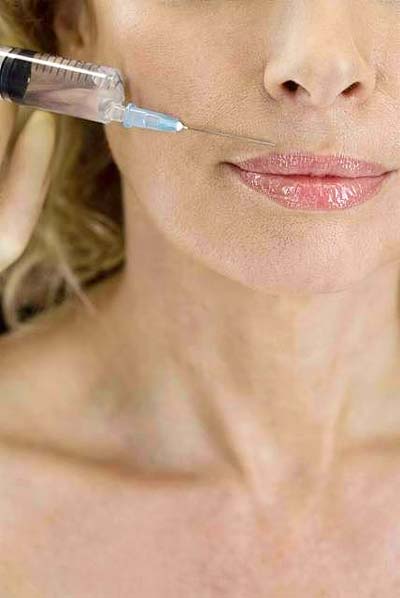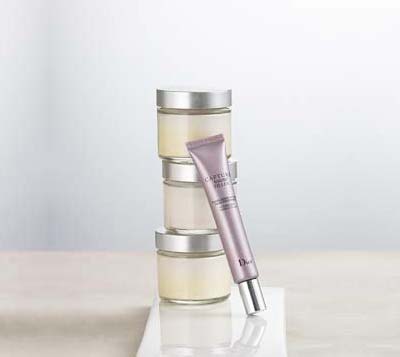|
|
|
 , ,
Font size |
Top 10 Beauty Treatments done by Celebrities Before the Oscars.
Top beauticians and skin specialists have confirmed that the fairy like
celebrities we see on Oscar night, is the concerted effort of beauty therapist
and doctors who take care that their client look flawless and best for the
occasion. Here it is for our viewers to have an informational article to quench
their thirst.

 Baby Drop Fillers:
Baby Drop Fillers:
A special 'Gucci' needle and baby drops of filler can smooth wrinkles even
on the day of an event. Nurse Jamie uses a hyaluronic acid- based filler for
natural, bruise-free results.
Fillers and injectables are a favorite quick fix for instant skin lifting.
Procedure called Baby Drop Filler uses designer needles and tiny drops of
hyaluronic acid fillers to achieve temporary natural-looking results, enough
to fool the world for at least one paparazzi-infested night.
As we age the volume of youthful skin diminishes and wrinkles and folds
begin to appear. It may sound too good to be true but those �smile lines�
around the eyes and �parentheses� around the mouth and �bags� under the eyes
can be smoothed and plumped instantly with a few quick injections. Baby Drop
Filler provids the injectables that will sculpt a more youthful appearance
in a single visit. With no down time these fillers provide beauty instant
gratification.
Some popular filler
Juvederm�
Juvederm� is an injectable gel with a hyaluronic acid base - a substance
your body creates naturally. A �next generation� filler, with the highest
concentration of hyaluronic acid it
works wonders to plump up hollows and erase wrinkles.
Restylane
Restylane is also a hyaluronic based filler that restores volume to sagging
features, leaving a youthful volume and fullness to your face. Safe and
gentle on the skin it requires no allergy testing.
Perlane
Perlane�s hylaluronic acid based clear gel attracts and binds water
molecules to help maintain volume. It is chemically cross linked to delay
breakdown by skin enzymes and generally lasts about six months.
Radiesse
Radiesse is a filler that is made of calcium based microspheres suspended in
a water-based gel. These beads form a structure under the skin around which
new collagen forms.
Results from Radiesse last up to 18 months.
Injectable wrinkle fillers can give you a more youthful look for a fraction
of what a traditional face lift costs. Most will fill lines and wrinkles in
less than 30 minutes with results that can last from four months to more
than a year.
Injectable wrinkle fillers, unlike Botox injections that relax the muscle
under a wrinkle, fill the line or crease with one of several different
substances. As a result, the line or crease seems to have nearly
disappeared.
Wrinkle fillers can also be used as "volumizers," plumping and lifting
cheeks, filling out thin lips, and plumping sagging hands.
The treatment is fast and easy. But all wrinkle fillers have a downside,
including the risk of allergic reaction and the formation of tiny bumps
under the skin. In some cases, those bumps may be permanent. A bluish skin
discoloration known as the Tyndall effect is also possible. The color change
can last for several months, but there are treatments available.
In very rare cases, skin cells may die if the wrinkle fillers are not used
properly. Typically, the wrinkle fillers with longer-lasting effects are the
ones more likely to cause side effects.
Not every wrinkle is right for every type of wrinkle filler. The least risks
and best results come from using the right wrinkle filler correctly. That's
one reason why you should only have wrinkle fillers injected by a
board-certified dermatologist or plastic surgeon.
To help you discuss your options with your doctor, here is a breakdown of
the wrinkle fillers currently available. It includes their basic
ingredients, how they work, their risks and benefits, and the best areas for
treatment. Your doctor can help you choose the right one for you.
Hyaluronic Acid Wrinkle Fillers
The most popular category of wrinkle fillers is hyaluronic acid. Each type
of hyaluronic acid wrinkle filler works in a slightly different way with
varying results.
Side effects are rare, but they can include redness, swelling, and bruising
at the injection site. The filler may also be seen beneath the skin as tiny
bumps. This is a problem that often improves over time.
How long the results last varies from several months to over a year. Some
research shows that repeated injections may help stimulate the body's own
natural production of collagen. That will help reduce the number of lines
and wrinkles. There is also some evidence that less filler is needed over
time to achieve the same look.
Hyaluronic wrinkle fillers include:
-
Wrinkle Filler: Juvederm Ultra/Juvederm Ultra Plus
-
Ingredient: Gel made of hyaluronic acid
-
Effects: Up to one year
-
FDA Approved for: Moderate to severe facial wrinkles and folds
-
FYI: Not recommended if you have severe allergies, particularly if
you're allergic to bacterial proteins
-
Wrinkle Filler: Restylane/Perlane
-
Ingredient: Hyaluronic acid particles suspended in a gel
-
Effects: Six months or longer
-
FDA Approved for: Moderate to severe wrinkles and folds.
-
FYI: Not recommended if you have severe allergies.
 Synthetic Wrinkle Fillers Synthetic Wrinkle Fillers
This smaller category of wrinkle fillers includes lab-made substances that
are not related to anything found naturally in the skin.
All the fillers in this group have similar side effects. Redness, swelling,
or bruising at the site of the injection is one of the most common. Other
possible side effects include nodules or bumps under the skin that can be
seen and felt and that, in rare instances, may require surgical removal.
The benefits of this category include a longer-lasting effect. And at least
one filler offers permanent filling of lines and creases. Products with
longer-lasting effects are more likely to cause side effects. When not used
correctly, however, synthetic wrinkle fillers may cause permanent
disfigurement.
Synthetic wrinkle fillers include:
-
Wrinkle Filler: Radiesse
-
Ingredient: Calcium hydroxylapatite suspended in gel
-
Effects: Typically one year; some research shows that the body begins
producing collagen around the micro-spheres, which might lead to longer
lasting effects over time.
-
FDA approved for: Long-lasting fill of deep lines, including folds
around the nose
-
FYI: The filler can clump when injected into the lips. There is also a
risk of allergy.
-
Wrinkle Filler: Sculptra
-
Main Ingredient: Synthetic poly-L-lactic acid
-
Effects: Typically up to one year
-
FDA approved for: Volumizing for HIV patients suffering from loss of
facial structure
-
FYI: The ingredients in this filler are made for deep injections below
the muscles and not for injecting into fine lines.
Collagen Wrinkle Fillers
One of the first wrinkle fillers developed was made from a purified form of
collagen extracted mostly from cows. Although it worked well and offered a
natural looking line and crease fill, the results didn't last long. Most
collagen injections began to break down as soon as one month after
treatment. Because these wrinkle fillers were made from an animal source,
they also had a higher rate of allergic reaction and required allergy
testing before treatment.
New ways of processing the collagen have helped reduce risks. In addition,
new forms of synthetic collagens are making these injections safer and more
useful for a wider range of people. Although the results are generally
shorter lived than other wrinkle fillers, many believe the results are
better and look more natural.
Side effects of collagen injections include some risk of allergic reaction
(mostly for those still using bovine sources) as well as bruising and
redness at the site of the injection.
Collagen injections include:
-
Wrinkle Filler: Cosmoplast/Cosmoderm
-
Ingredient: Collagen made from purified human tissue grown in a lab.
Does not require a skin test.
-
Effects: Up to six months depending on the area that is treated
-
FDA approved for: Frown lines, crow's feet, forehead lines, vertical
lip lines (also called bleeding lipstick lines), nose-to-mouth lines, lip
border, scar filling. Cosmoplast is used for deeper, more pronounced
wrinkles.
-
FYI: One of the few fillers that is recommended for treating fine
lines around the eyes
Autologous Wrinkle Fillers
This category includes wrinkle fillers made from substances, usually fat,
taken from your own body. The fat is normally taken from the thighs,
buttocks, or stomach. They are most often used for fine lines and creases on
the face.
Though these aren't commonly used, they can be an option for some people.
Risks for these injections are similar to other wrinkle fillers, including
bruising, redness, and swelling at the site of the injection. You need,
though, to have two procedures (one to
remove the fat and one to inject it). Both, though, can be done in one
visit. Additional purification steps taken in the lab can be costly and time
consuming. Results can be permanent, although you may need a series of
injections. Because the fillers come from your body, these injections do not
require FDA approval.
Minimizing Risks and Increasing Good Outcomes for All Wrinkle Fillers
Wrinkle fillers are among the safest cosmetic procedures in use today. But
there are also things you can do to help ensure your treatment is safe:
Don't let price be your guide. If you are offered a wrinkle filler treatment
that costs far less than the standard treatment, it's likely some
compromises are being made, either in the skill of the provider or the
quality of the product. Never risk making a bargain with your face.
All wrinkle fillers should be done in a medical setting with sterile
instruments. Treatments done in homes, hotels, spas, or resorts are not
being done in medical environments, regardless of who is doing them.
Do not get injectable wrinkle fillers from sources outside a doctor's
office. Know what you are being injected with, and ask your doctor if an FDA-approved
wrinkle filler is being used and if it was purchased directly from the
maker. There have been reports of everything from industrial-grade silicone
to baby oil to unapproved fillers being used. If a provider won't give you
information about what will be used, don't let that provider do the
procedure.
Next..
Dated 27 February 2013

|
|
|
|
|
|









